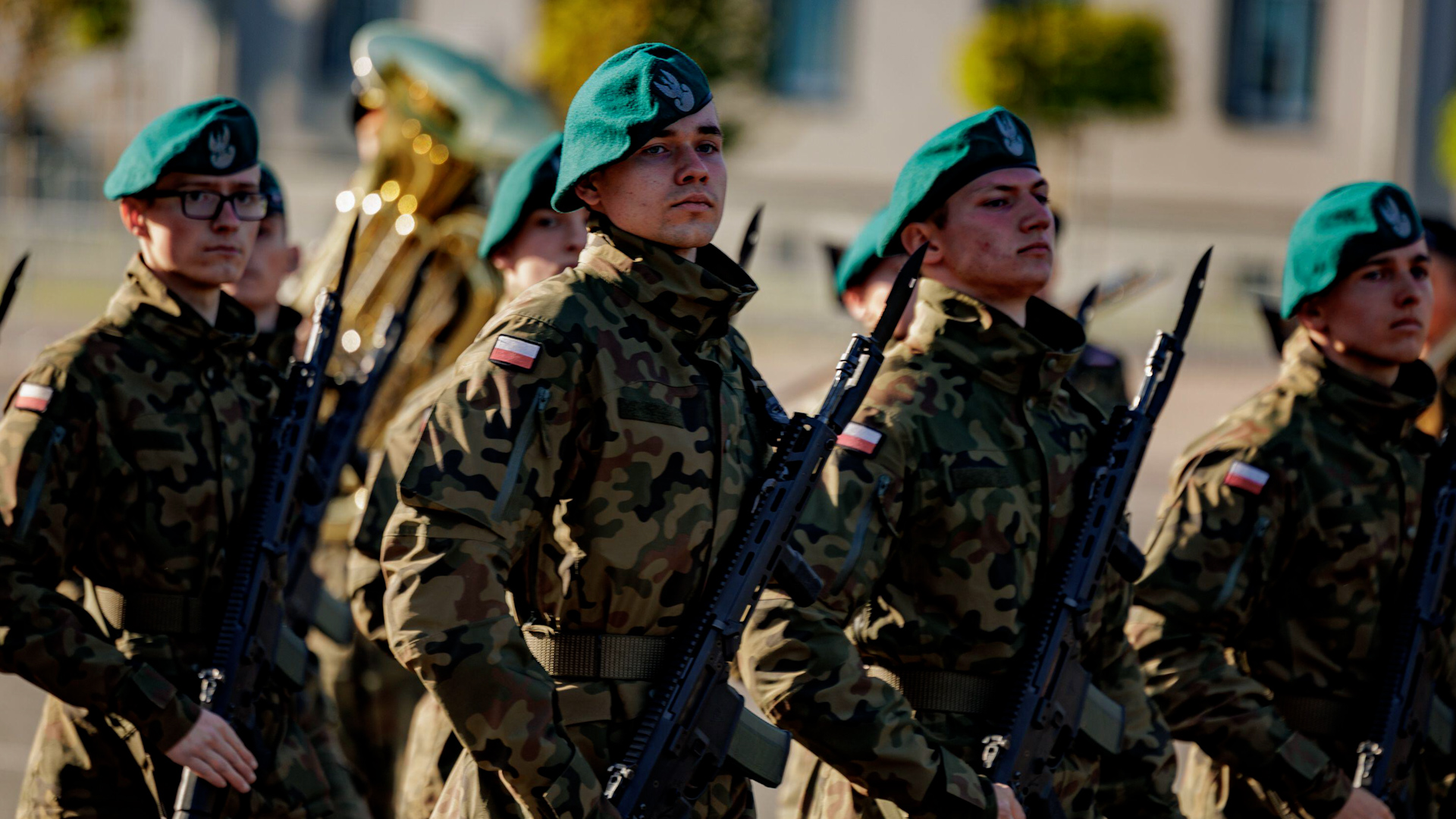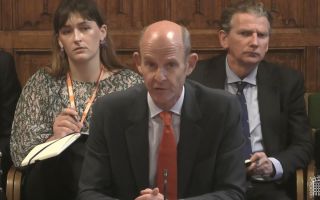
If the UK is truly going to be war-ready, what sort of money does it need to spend?

The Prime Minister's pledge to boost UK defence spending to 2.5% of GDP by 2027 has been warmly welcomed, but it also prompts the question is it enough?
If the UK is truly going to be war-ready then what sort of money does it really need to spend?
One country that's gone further and faster than most in ramping up its defence budget is Poland.
Warsaw plans to spend a massive 4.7% of its GDP on defence this year, taking the figure to around £27bn.
While the UK spends considerably more money, around £64bn, Poland is actually spending more on defence as a percentage of its GDP than any other country in Nato, including the United States.
Even back in 2022, before Russia's full-scale invasion of Ukraine, Warsaw was spending 2.4% of GDP on defence.
Now it needs to be said of course that Poland's GDP, the goods and services it makes, is considerably less than the UK's - it's around £809 billion compared with Britain's £2.6 trillion.
It also has half the population.
But the gap is closing fast.
Poland's GDP per capita is growing at 3.6% a year, while in Britain it is falling.
Poland is already 20th in the world in terms of GDP per capita and has seen the fastest expansion in Europe since becoming a democracy in 1989.
In fact, it was Sir Kier Starmer himself, back in 2023, who predicted that on the current economic trajectory Eastern European economies like Poland could overtake the UK by 2030.
Back to the military though. What is Poland spending this huge injection of money on?
First of all, Warsaw plans to increase the size of its land forces from its existing 200,000 troops to 300,000 - four times the size of the British Army.
After gifting its stocks of Soviet-made MiG-29 jets and T-72 tanks to Kyiv, Poland has also gone shopping, investing billions in new kit.
The order list is huge: 980 South Korean K2 Black Panther tanks and 366 US M1 Abrams tanks, 96 Apache attack helicopters plus hundreds of HIMARS rocket launchers.
Poland's air force is getting 48 South Korean FA-50 combat aircraft as well as 32 American F-35 jets to add to the 48 F-16s it already has.
It has also ordered 22 British-made air defence batteries, plus three UK-designed frigates.
Warsaw is also spending £1.9bn on an Integrated Battle Command System, a digital hub for Patriot air defence missiles.
So where is all this money coming from?
Well, Poland's debt levels of around 50% of GDP are actually much lower than other Eurozone members like France and Italy, so there is scope to borrow more.
But with economic growth predicted to be 3.9% in 2025, it actually may not need to do so.
By comparison the UK's public sector debt is around 100% of GDP - the highest it has been since the early 1960s.
Poland has also received nearly €60bn, around £50bn, in grants and cheap loans from the EU.
Warsaw has even floated a proposal that would allow it to hike military spending even further.
It wants to exclude defence spending from the bloc's tight fiscal rules which limit the size of member states' deficits.
Poland has also dramatically reduced its reliance on Russian gas and oil, finding alternative cheaper sources and investing in renewable energy.
The question some ask though is whether this is sustainable?
All this new kit needs to be maintained throughout its lifetime - and that costs a lot of money.
Analysts have calculated that for every $1 spent on an F-35 jet, another $3.75 will need to be spent keeping it flying over its lifetime.
Speaking to Reuters, Fenella McGerty, senior fellow for Defence Economics at the International Institute for Strategic Studies, said: "The uplifts in spending have placed considerable pressure on Poland's finances as the country struggles to close its deficit.
"This will inhibit further increases at the top level, while within the defence budget, major purchases will consume a significant amount of spending, squeezing funding for other programmes."
Plenty of bang from plenty of bucks
Now of course a strict "bang-for-buck" comparison between the UK and Poland is difficult.
Poland may soon have 1,600 tanks compared with the UK's 148 Challenger 3s, but Britain also has a nuclear deterrent.
But with the Trump administration pushing for more European spending, Warsaw is fast becoming the poster child.
When Russia seized Crimea in 2014, its armed forces were the ninth biggest in Nato.
Today they are the third largest behind the US and Turkey.
Last year the head of the British Army, General Sir Roly Walker, said the UK military must be ready to "fight a war in three years".
The Army needs to double it fighting power by 2027 and triple it by the end of the decade, he said.
For anyone wondering what sort of spending that might take - well you know where to look.









